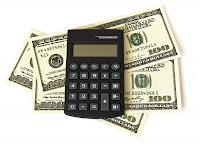Silicon Valley startup Bloom Energy has invented what some are calling the power plant in a box, a little square shape device which is about the size of a brick is said to be able to power an entire home.
With the Bloom Box You'll generate your own electricity wirelessly with out the need for addition equipment in the home, Bloom Energy ultimate goal with the box is to get rid of the need for big power plants and transmission line grids. Co-founder and chief executive, K.R. Sridhar, while working as a director of the Space Technologies Laboratory at the University of Arizona, was approached by NASA and asked him to find a way to make life sustainable on Mars. The first project his lab came up with was a device that would use solar power and Martian water to drive a reactor cell that generated oxygen to breathe and hydrogen to power vehicles, from that came the Bloom Box.
Breakthrough technology that will revolutionize the way we think of energy
The Bloom Box is a solid oxide fuel cell (SOFC) that uses liquid or gaseous hydrocarbons (such as gasoline, diesel or propane produced from fossil or bio sources) to generate electricity on the site where it will be used, According to the company, a single cell (one 100mm × 100mm metal alloy plate between two ceramic layers) generates 25 watts.
In an interview with CBS, company co-founder K.R. Sridhar was asked about whether the box is intended to replace the utility companies he responded by saying, "The Bloom box is intended to replace the grid…for its customers. It's cheaper than the grid, it's cleaner than the grid." So far the small startup claims to have 20 large corporations as customers testing Bloom boxes in California. FedEx, Walmart, Google to name a few are all on board.
Watch CBS Video
Many skeptics would point out the fact that fuel cells have underdelivered on their promise over the years but the company is worried and is very confident about their device. "Our system can use fossil fuels like natural gas. Our system can use renewable fuels like landfill gas, bio-gas," Sridhar said in an interview, Bloom's corporate boxes cost about $700,000 to $800,000 and have a three- to five-year payback period, the company estimates. As the device begins the mass production phase each home sized Bloom device will cost under $3000, "We are twice as efficient as the U.S. national grid, which means we can produce the same amount of electricity for half the fuel and half the carbon footprint," Sridhar says.
Many Analyst are predicting that Bloom could do very well in U.S. states that subsidize alternative energy technologies, such as California, New York, and Connecticut. We have to wait and see what impact the Bloom Box will have on our ever growing need for energy. Bloom boxes will power not just our richest companies, but remote villages in Africa and all our houses said Sridhar. Source
Join The Green Club

Share
















